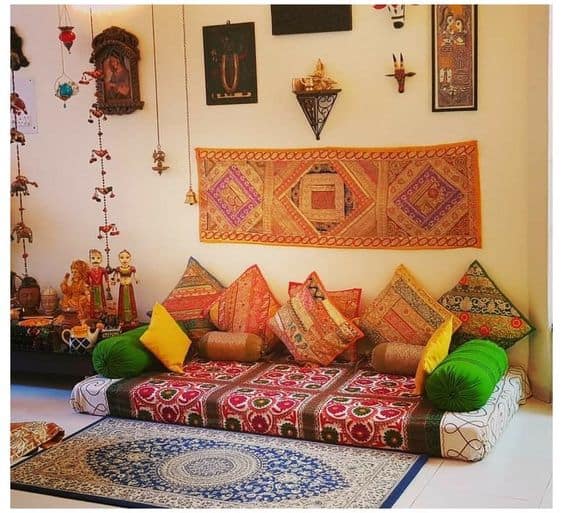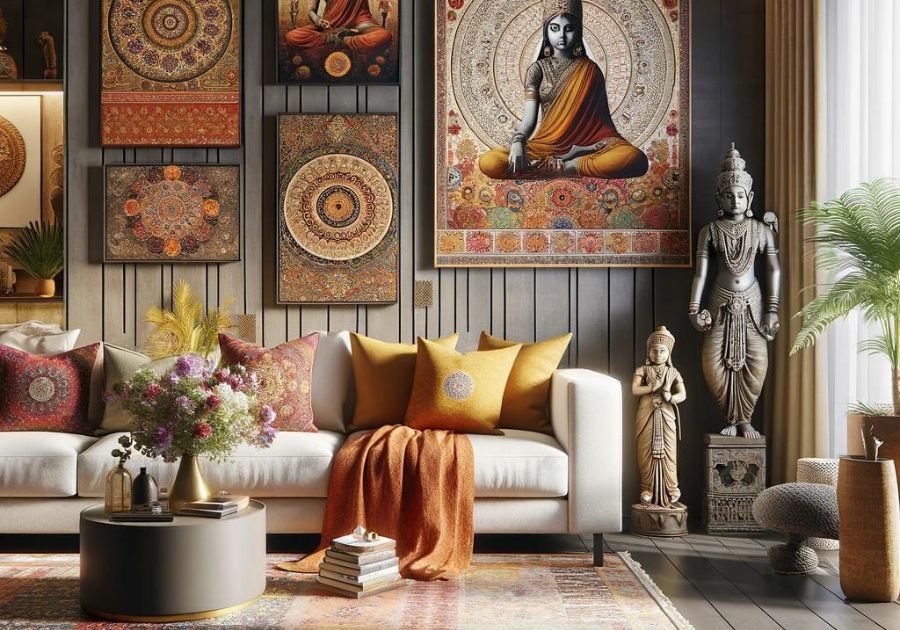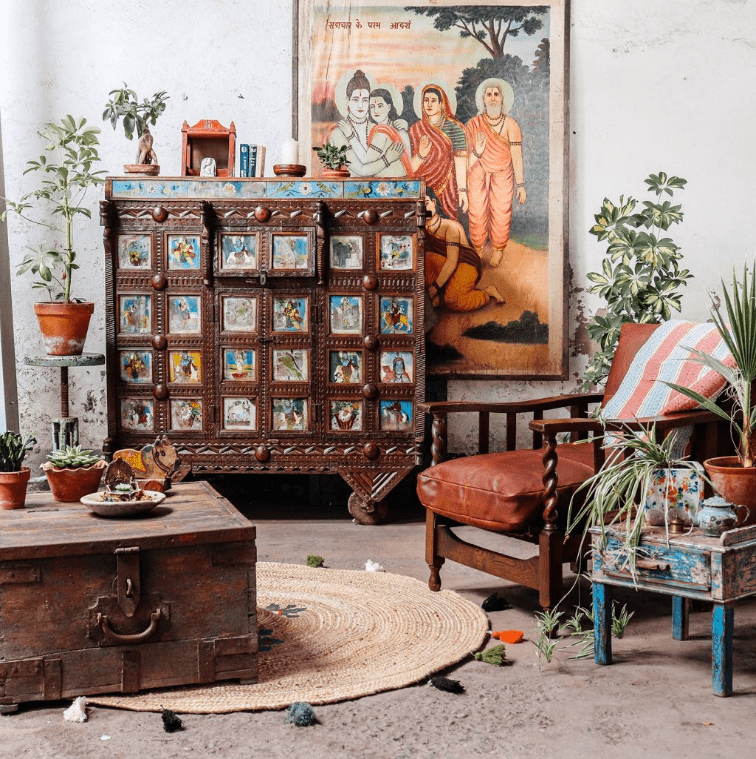Introduction to Indian Traditional Decor
Indian traditional decor is more than just a style; it’s a rich tapestry of culture, history, and artistry. With each region of India contributing unique elements, this decor style showcases vibrant colors, intricate patterns, and elaborate craftsmanship. As someone who has spent years immersing myself in Indian culture, I can personally attest to the warmth and vibrancy this decor style brings to any home.
The Essence of Indian Traditional Decor
Indian decor is steeped in symbolism and tradition. Let’s explore some key elements that define this captivating style.
Color Palette
Indian decor is characterized by bold and vibrant colors. Common hues include:
- Deep reds and maroons
- Bright yellows and oranges
- Rich blues and greens
- Metallics such as gold and silver
Textiles and Fabrics
The textiles used in Indian decor tell stories of craftsmanship. Look for:
- Sarees and dupattas used as wall hangings
- Handwoven rugs with traditional patterns
- Brightly colored cushions and throws
Art and Craftsmanship
From intricate wood carvings to stunning pottery, Indian decor emphasizes artisanal works. Incorporate:
- Warli paintings
- Brass and bronze artifacts
- Handcrafted wooden furniture
Popular Styles of Indian Traditional Decor
Different regions of India exhibit distinct decor styles. Here’s a look at some popular ones:
Rajasthani Decor
Known for its colorful textiles and handcrafted furniture, Rajasthani decor often includes:
- Brightly colored wall frescoes
- Intricately carved wooden jharokhas (balconies)
- Traditional puppets and paintings
Kerala Decor
Kerala offers a more serene approach with natural elements, including:
- Wooden ceilings and bamboo structures
- Ayurvedic decor elements like calming colors
- Handicrafts and coconut shell items

Bengali Decor
Characterized by minimalism and elegance, Bengali decor often features:
- Elegant textiles like muslin and silk
- Simple yet beautiful forms in furniture
- Artistic representations of nature and mythology
Key Elements to Incorporate Indian Traditional Decor
When integrating Indian traditional decor into your home, consider the following key elements:
Furniture Selection
Choose solid wooden furniture with intricate carvings. Look for:
- Chests and trunks for storage
- Low seating like diwans and ottomans
- Handcrafted tables with inlay work

Lighting
Lighting plays a crucial role in setting the mood. Try using:
- Traditional lanterns or diyas
- Colorful stained glass lamps
- Hanging pendant lights with intricate designs
Wall Decor
Add depth to your walls with:
- Textile wall hangings
- Traditional mirrors with ornate frames
- Painted murals depicting cultural scenes

Accessories and Accents
Don’t forget the small details!
- Decorative trays and bowls made of brass or terracotta
- Intricately designed cushion covers
- Scents like incense and essential oils
Creating a Cohesive Indian Traditional Decor Theme
To create a harmonious environment, follow these tips:
Choose a Central Theme
Decide on a theme based on your personal taste or cultural connections. Here are some examples:
- Classic Mughal grandeur
- Colorful Jaipur jaunts
- Serene Kerala coastal vibes

Mixing Textures and Patterns
Don’t shy away from combining different textiles and patterns. Consider this:
- Pair intricate block-printed fabrics with simple solids
- Add layers with rugs, throws, and cushions
- Use wall art to balance busy patterns
Focal Points and Balance
Every room should have a focal point. You can achieve this by:
- Placing a large piece of art or a statement furniture item in the center
- Balancing heavy elements with lighter decor items around
- Using lighting to highlight focal areas

Pros and Cons of Indian Traditional Decor
| Pros | Cons |
|---|---|
| Rich cultural heritage | Can be overwhelming if not balanced |
| Vibrant color schemes | May require high maintenance for upkeep |
| Unique craftsmanship | May be expensive for authentic pieces |
| Timeless elegance | Can clash with modern elements if not integrated properly |
FAQs about Indian Traditional Decor
What are the core characteristics of Indian traditional decor?
Indian traditional decor is recognized for its vibrant colors, intricate designs, and a mix of various cultural influences. Key characteristics include the use of traditional textiles, handcrafted furniture, and artisan-made decor items.

How can I incorporate Indian decor into a modern home?
Mixing modern aesthetics with Indian traditional decor can create a balanced atmosphere. Use modern furniture with Indian textiles, add statement art pieces, or try to layer colors to maintain harmony.
What type of lighting is best for Indian traditional homes?
Soft, warm lighting is ideal. Consider using decorative lanterns, diyas, or pendant lights that reflect traditional craftsmanship.

Can I DIY Indian decor elements?
Absolutely! Many Indian decor elements can be DIYed, such as creating wall hangings from saris, painting pots with traditional patterns, or even making your own cushion covers using block prints.
What should I avoid in Indian traditional decor?
Avoid over-cluttering spaces. While Indian decor is vibrant, too many patterns or elements can overwhelm a room. Instead, focus on creating a cohesive look with a few standout pieces.
Conclusion
Incorporating Indian traditional decor into your home is a deeply personal and gratifying process. It not only enhances aesthetic appeal but also adds a touch of cultural richness and warmth. Whether you choose to fully embrace the vibrancy or selectively incorporate elements, making it your own is the key. Immerse yourself in the stories behind each piece, and let your home narrate the tales of a rich and diverse heritage.